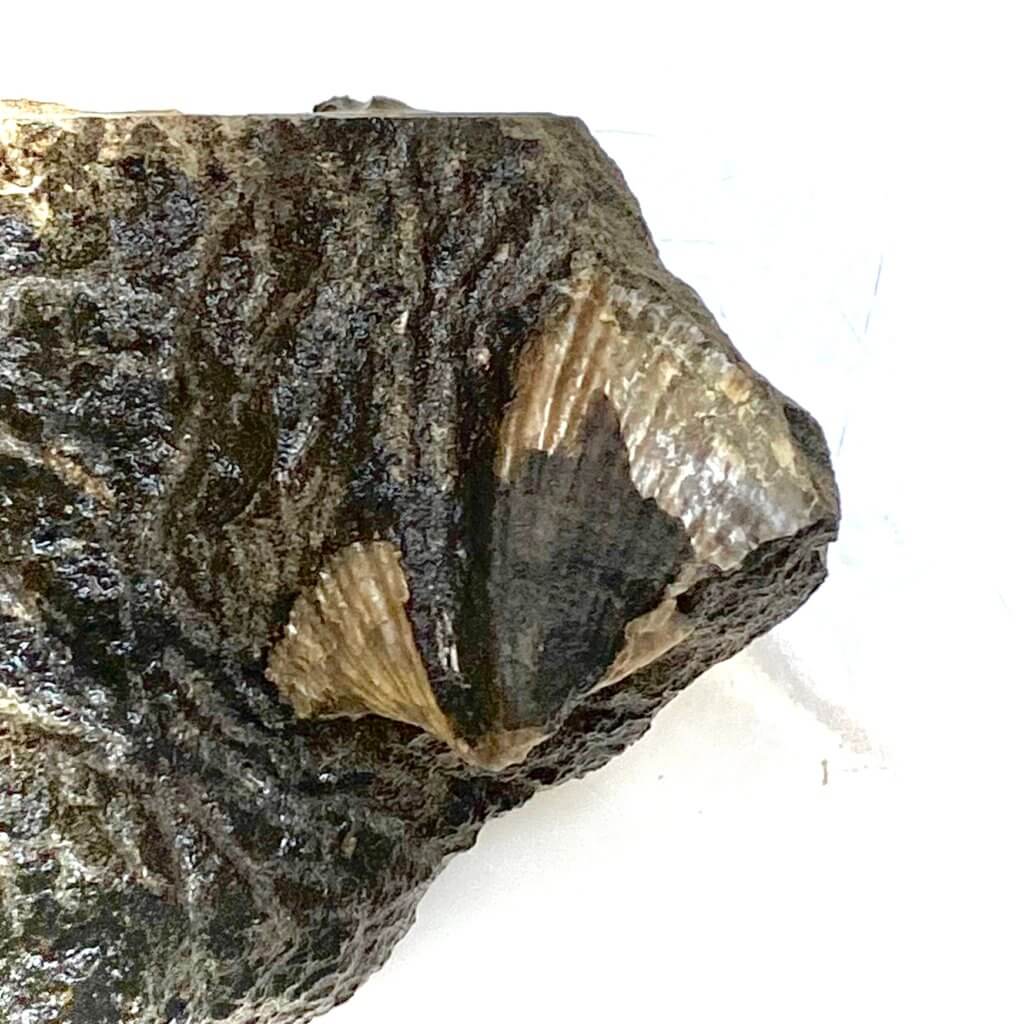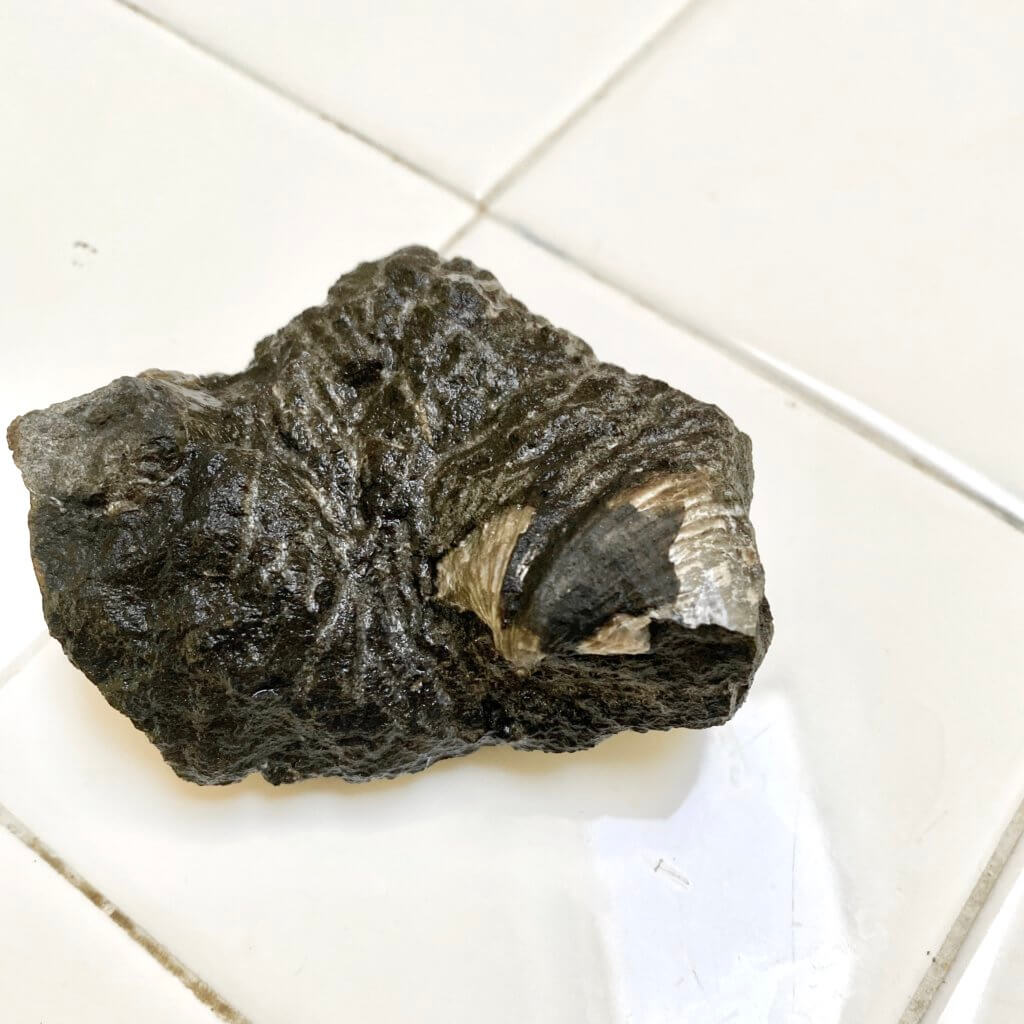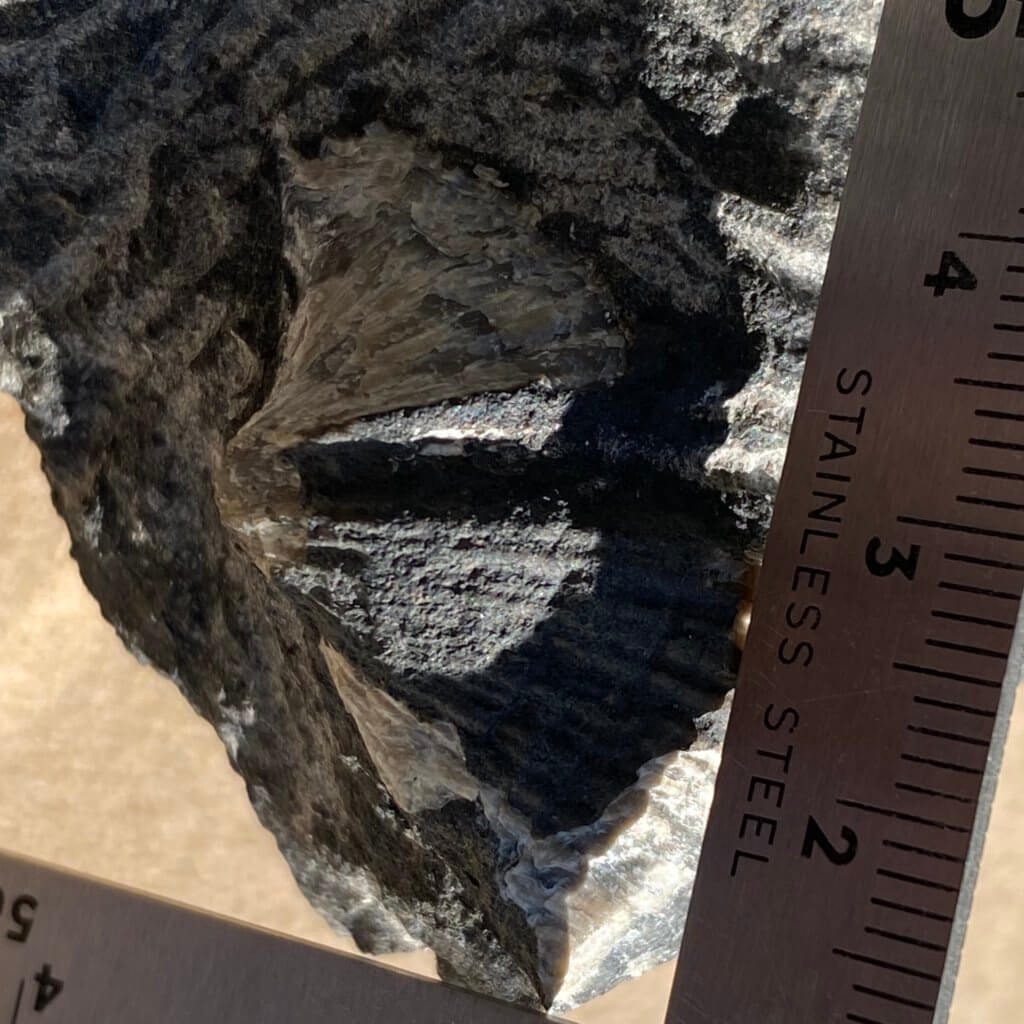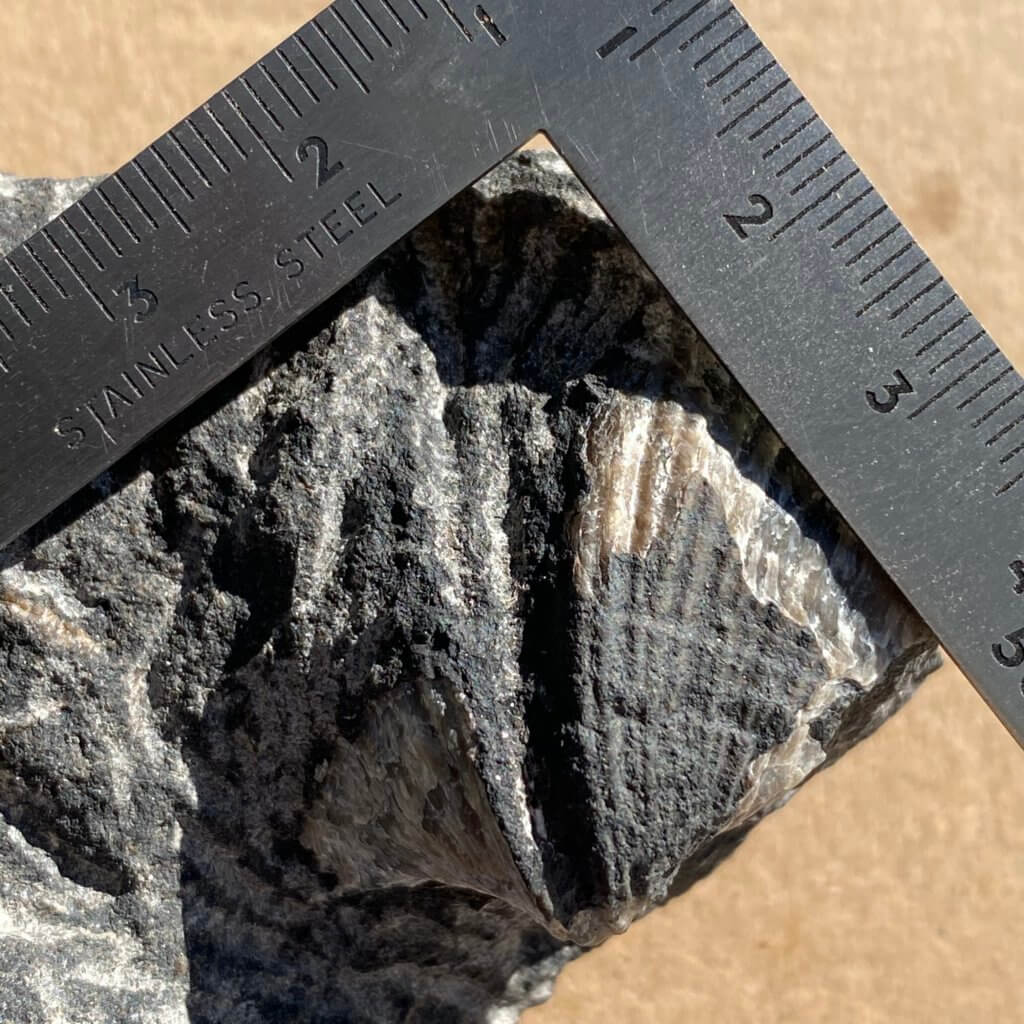
Catalog Number: CG-0103
I have seen a few specimens of Neospirifer locally, however none this large and in as good as shape. I have settled on this being the genus Neospirifer (Fredricks 1919), or at least something from the Spiriferidae family. The prominent groove down the middle of the shell with two raised edges, and the fan shape both are convincing in identification.
Fossil remains of Neospirifer exist in North America, South America, Asia, Europe and Australia. Like most local fossils, it did not survive past the end of the Permian, also known as the Permian-Triassic extinction. Of all the known mass extinctions, this is the largest. An estimated 96% of marine species went extinct.
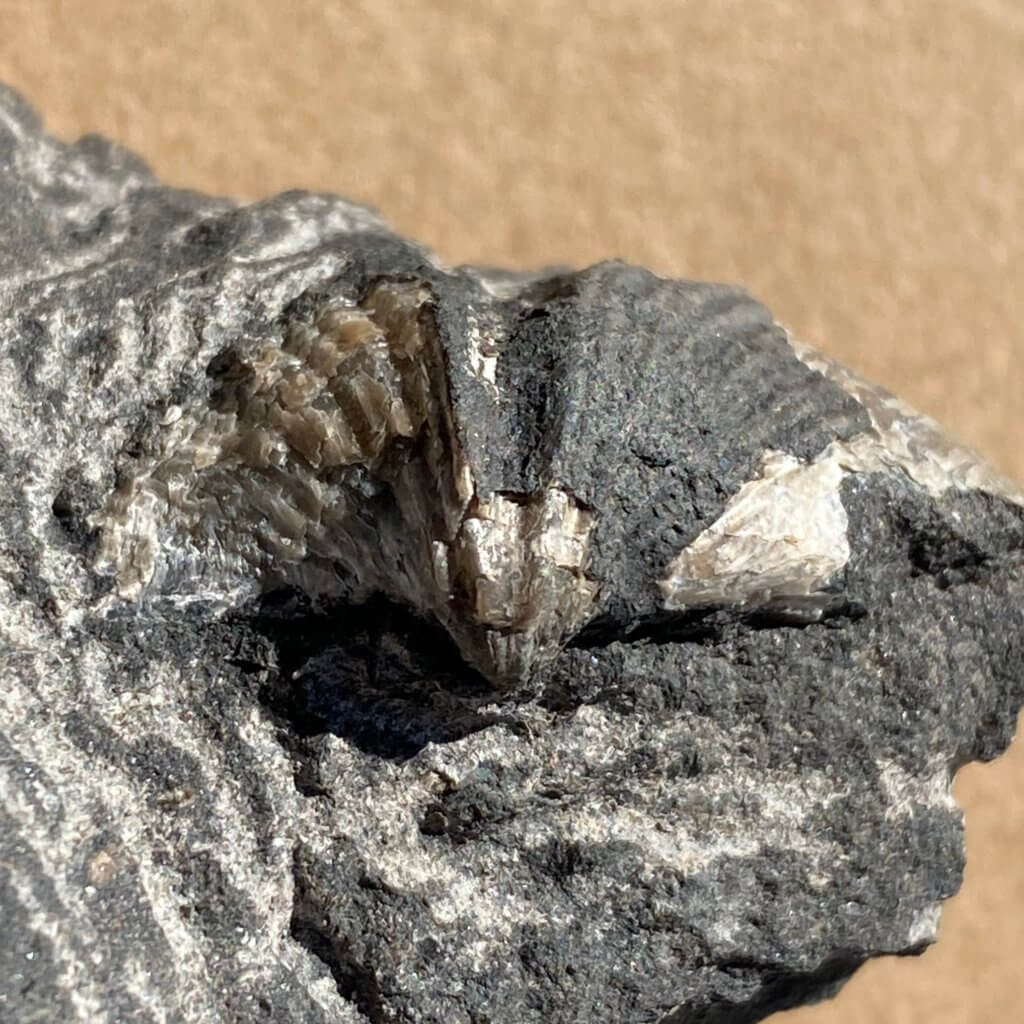
I recovered this particular piece in Guffy Run. It was part of a very large piece of float Brush Creek limestone lying in the stream bed. In breaking up the boulder, I did not find very much of interest. When this brachiopod finally exposed, only half was visible. A quarter of it showing preserved shell material. I nearly left it there, as it was going to be difficult to remove. It is the only specimen I brought back from that particular outing.
The plan is to continue to expose it. There is only a small amount of matrix remaining. This should allow me to remove the rest of the rock cover using the air scribe on low power. The bit of black material on the right side appears to also be matrix and may come off easily. The preserved shell material is very lustrous.
More reading about Neospirifer online
- Wikipedia – Genus Article
- Encyclopedia Britannica – Article
- The Pennsylvanian Atlas of Ancient Life Midcontinent United States – Genus Page
- The Encyclopedia of Life – Genus Page showing well over 3,000 known collected specimens or observations in the United States
- Carboniferous Fossils of Russia – Neospirifer cameratus comparison of specimens from North America and the Moscow basin of Russia.


